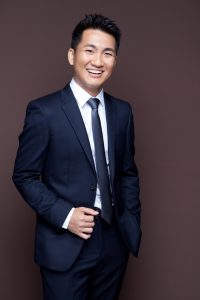 Ming-Chen Hsu joined the mechanical engineering department in August as an assistant professor and is already looking ahead to the future possibilities offered by his position.
Ming-Chen Hsu joined the mechanical engineering department in August as an assistant professor and is already looking ahead to the future possibilities offered by his position.
Hsu holds his bachelor’s and master’s degrees from National Taiwan University, a master’s from the University of Texas at Austin and a Ph.D. from the University of California, San Diego.
When he was young, he was interested in computer programming and building websites but studied engineering instead, finding he enjoyed physics and mechanics as well.
He realized during a class in numerical analysis that he could combine his interests in math and computer science to perform complex engineering analyses.
“I felt it was something I could do better because I was never very handy with experimental work,” says Hsu. “I realized with computational analysis, if the algorithm and programming are correct, theoretically, your simulation results should be correct.”
That’s when Hsu became focused on numerical analysis and computational fluid dynamics. During his Ph.D., he started to focus on structural analysis and computational fluid-structure interaction.
“Fluid-structure interaction is an emerging field, and many engineering applications involve the coupling of these two problems,” says Hsu. “Having experience in both fields really helped me to better understand this linked system.”
He has research experience in various areas, including the study of cerebral aneurisms and bioprosthetic heart valves—but the majority of his work has involved wind turbines, which he’ll continue at Iowa State.
“I want to do turbine work here because it’s a promising research direction, not just in the U.S., but in the world. I believe Iowa State is one of the places with a strong foundation for my research. People in this state are really fascinated with wind energy.”
The turbine industry is just one reason Hsu decided to join the Iowa State faculty. He also has a high regard for the university’s research programs and the friendly working environment.
“Iowa State has many opportunities to collaborate,” says Hsu. “I believe that working with experimentalists here will help us improve the fidelity of the computational framework and better bridge theory and the real world.”
In addition to his research, Hsu will be teaching ME 160—an introductory class combined with computational skills—this fall.
He says he was impressed with the college from the time he first interviewed. “It was like a family here: everybody was so nice and people appreciate my work.”
